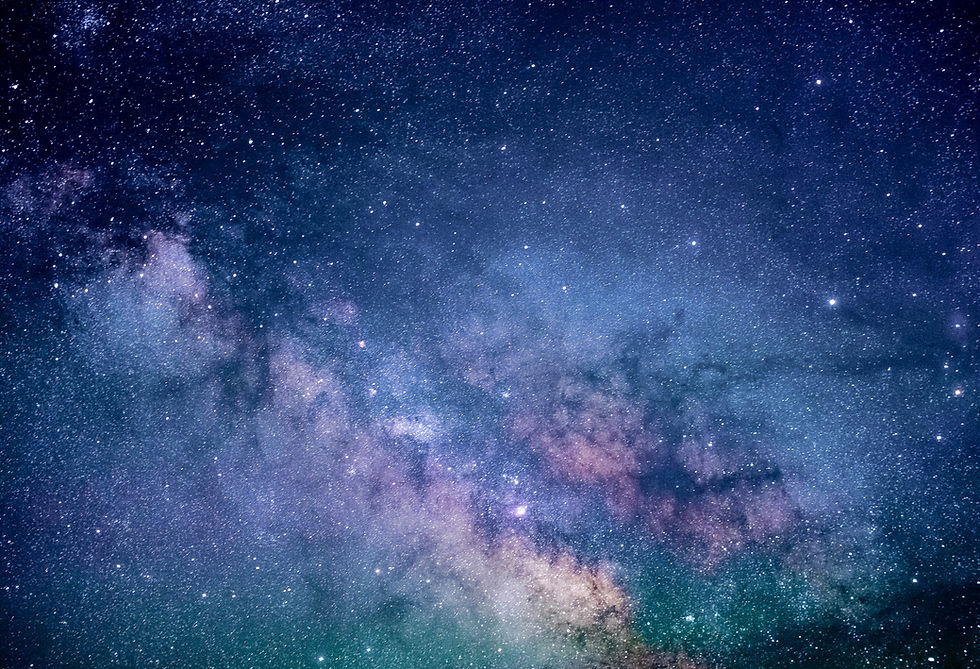Look Up Nature Study
- Brenda

- Mar 18, 2020
- 3 min read
Updated: Jun 16, 2020
Looking up gives us a perspective on the vastness of creation. One year for my birthday I had a star party with hot chocolate and donuts an hour drive from any lights. I felt so alive, so small but significant at the same time. Could all that be created for us to see, if we have eyes to see?

Weather and Stars
They must be let alone, left to themselves a great deal, to take in what they can of the beauty of earth and heavens; for of the evils of modern education few are worse than this––that the perpetual cackle of his elders leaves the poor child not a moment of time, nor an inch of space, wherein to wonder––and grow. At the same time, here is the mother’s opportunity to train the seeing eye, the hearing ear, and to drop seeds of truth into the open soul of the child, which shall germinate, blossom, and bear fruit, without further help or knowledge of hers. Charlotte Mason
Reference:
Anna Comstocks Handbook of Nature Study. (HoNS) Weather/climate Pages 780-814 (Astronomy) p. 294-415 Nature Anatomy Chapter 2: What’s up
Astronomy Drawing tutorial: https://youtu.be/QDC3R39AcSA
What can you see in the sky tonight: http://earthsky.org/tonight
Learning about the night sky PDF booklet http://des-docdb.fnal.gov/cgi-bin/RetrieveFile?docid=3129&filename=Discovering%20the%20Night%20Sky.pdf&version=1
An explanation and glimpse at our universe to scale: https://youtu.be/Iy7NzjCmUf0
A trip through the Universe: https://youtu.be/7PgGIolPapw
“Live” shots of Sun: https://sdo.gsfc.nasa.gov/
Nature journal from the Armitt showing stars https://archive.org/stream/BoxCM8FileCMC60icmc60/p050-p099cmc60#page/n39
Skychart templates: http://voyager.dvc.edu/~psasse/astronomy/Skycharts.htm
The Evening SkyMap (by month): http://www.skymaps.com/downloads.html & links to more information about sky events that month
1. Nature Time: Notice the weather as you spend time outside every day. Make time for night observation. We live in a great place for dark sky.
2. Books:
Eric Sloan’s Weather Book
The Storybook of Science by Jean Henri Fabre (Chapters 34-56)
Close to the Wind: The Beaufort Scale by Peter Malone (PB, K+, 32 pp.)
Not Only for Ducks: The Story of Rain by Glenn Orlando Blough (46 pp.)
On the Same Day in March: A Tour of the World’s Weather by Marilyn Singer (PB, 40 pp.)
Clouds by Anne Rockwell (LRFO 1)
Man Who Named the Clouds by Julie Hanna (40 pp.)
Climate Maps by Ian F. Mahaney (PB, 24 p.) *Don’t miss this one
Air: The Elements by Ken Robbins
Blizzard!: The Storm that Changed America by Jim Murphy (144 pp.)
Miss Pickerell and the Weather Satellite by Ellen MacGregor (157 p.)
Danny Dunn and the Weather Machine by Jay Williams (144 p.)
Sharing the Skies Navajo Astronomy by Nancy C. Maryboy and David Begay
Find the Constellations by H.A. Rey
The Moon Seems to Change by Franklyn Branley
The Planets by David Sobel
Great Astronomers by Robert S. Ball http://www.gutenberg.org/files/2298/2298-h/2298-h.htm
Adventures in the Solar System, Planetron and Me by Williams and Regan
Galileo’s Daughter by David Sobel
The Moon Book by Gail Gibbons
3. Journal
Keep a weather journal and look for patterns. Learn how to sketch the stars with larger dots for brighter stars and smaller dots for dimmer ones.
4. Learning Activities
Snow
Read Snowflake Bentley? Look at snowflakes on website?
http://snowflakebentley.com Find hoar frost on a window and draw it in your journal? Cut a snowflake out of paper? http://www.instructables.com/id/How-to-Make-6-Pointed-Paper-Snowflakes/
History
Share any of these links to create a summary of historical “study of weather”.
Tower of the Winds: http://www.stoa.org/metis/cgi-bin/qtvr?site=roman;node=5
Galileo Thermometer: http://en.wikipedia.org/wiki/Galileo_thermometer
Professor Joseph Henry: http://siarchives.si.edu/history/exhibits/henry/meteorology
Make an entry in your nature journal or century book about weather reporting/study.
Talk about weather proverbs or sayings that are based on scientific facts. Copy one down into our journals. Share nature journal discoveries from the past month.
Instruments
Talk about thermometers, cup anemometers, Weather watching. Keeping a weather journal. Keep a Phenology Wheel? Talk about atmosphere. Hang an outdoor thermometer. Record the temperature one day? Or for many days using this graph?
Or use the weather record on page 807 HONS as a guide. For older kids: build a weather station?
Mom read pg 788-789 about Height of Atmosphere. Consider this video: http://www.geography4kids.com/files/atm_composition.html
Make an entry in your nature journal. Record outside temperature?
Experiments
Do experiment 220 on page 786 HONS. Record your findings in nature journal.
Add drawings
Clouds and Storms
Water cycles and Rainbows
Sunsets and Sunrises
Constellation expert
Pick out a well-known constellation that you might find this week. Learn about what stars make up that constellation & any lore.. Draw and label it in your journal, adding what you know. Be artistic, as many constellations represent some form of person or animal body. Looking at the sky, can you find the constellation that you learned about? Draw and label in your journal by sketching the night sky - larger dots for larger/brighter stars, softer/smaller dots for the lesser stars, soft shadowing for galaxies. Added bonus: Sketch the stars you see that surround the known constellations you entered. Pull out your Skymap and see what your constellations neighbors are.
Compare
Get outside at dark. Had the moon shape changed drastically since the last time you observed? Or is it looking the same? Compare the night sky this week to the night sky from last month. What is the same? What has changed? Make sure to keep a journal entry about your wonderings, observations and consider making a list of the same and differences. Consider adding a poem, bible verse or quote about stars or planets to your nature journal.
Resources adapted from Marcia Mattern with thanks and not for sale.











Comments